Fairlawn and Beyond: Lake Forest's Farwell-Winston Family
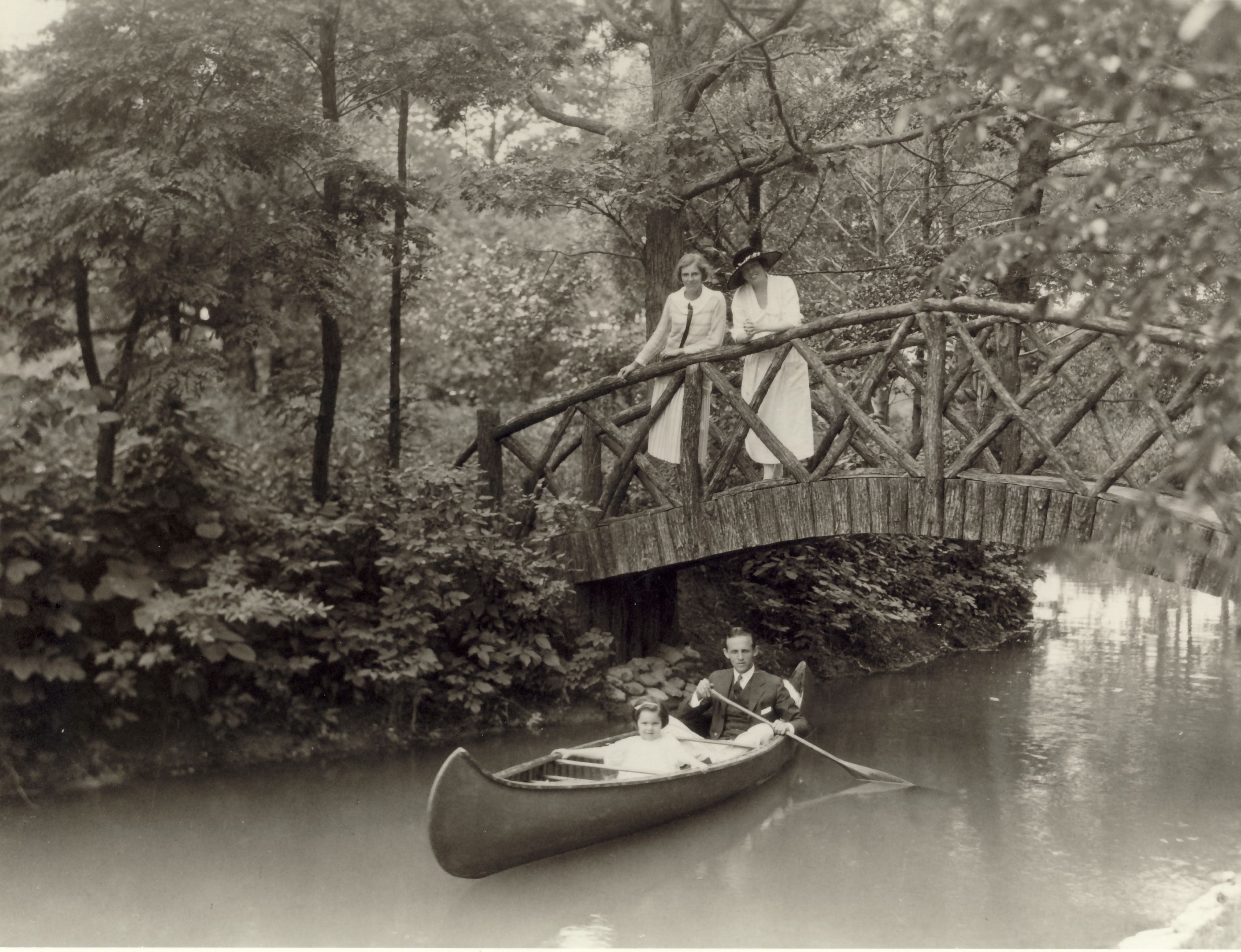

The clerk fell ill shortly after hiring Charles Farwell and so the young man was quickly thrust into the spotlight, having to take on additional duties. Within a few short years he himself was serving as a clerk of the Cook County court and becoming one of the leaders of Chicago’s new Republican party.
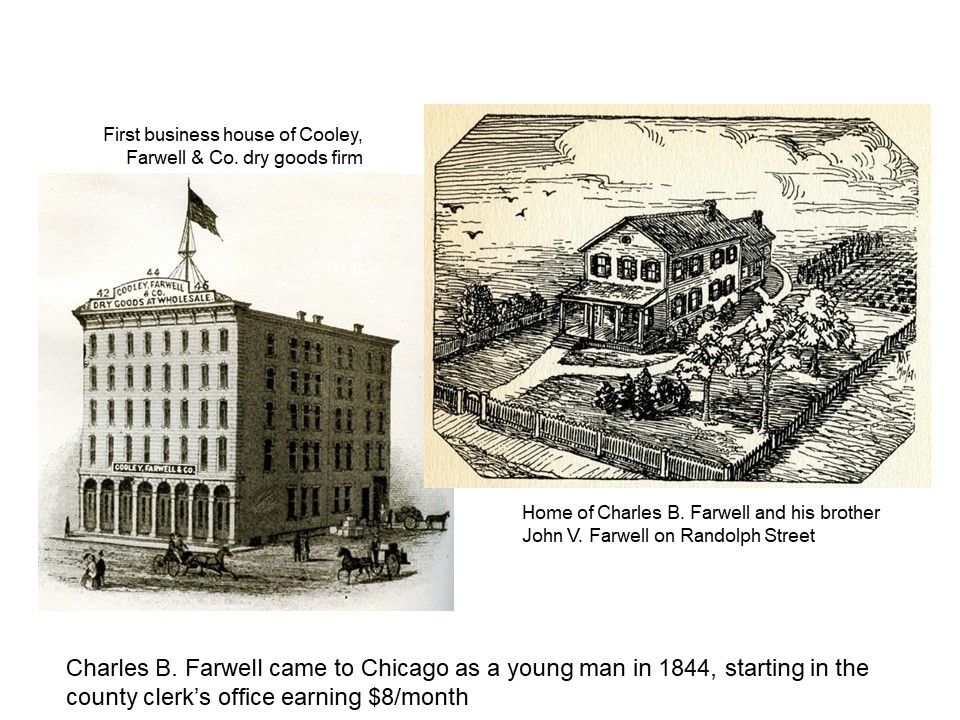
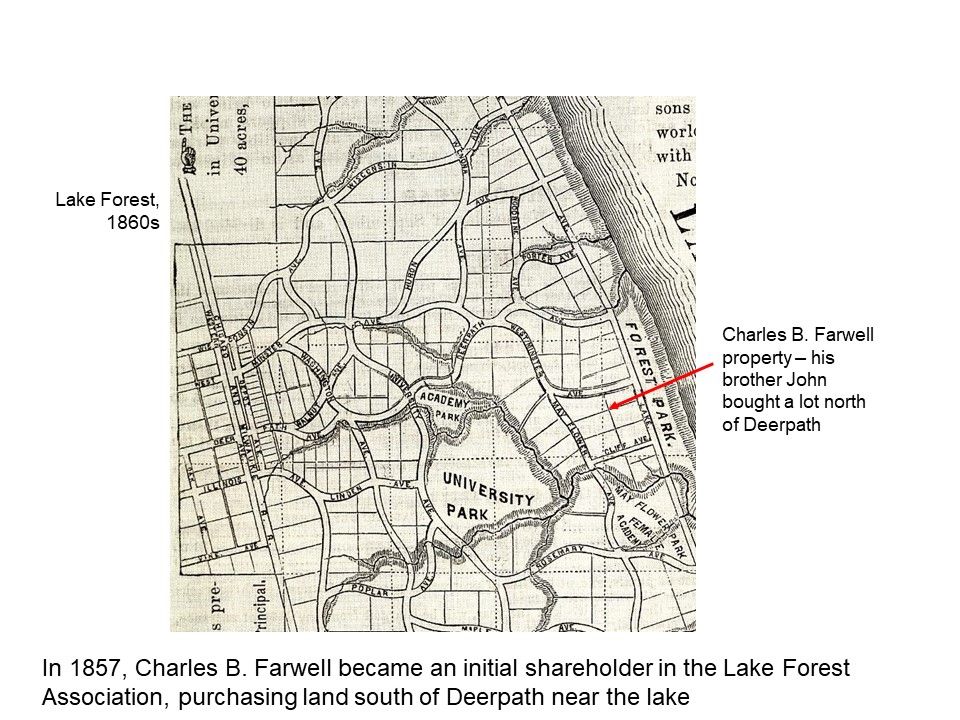
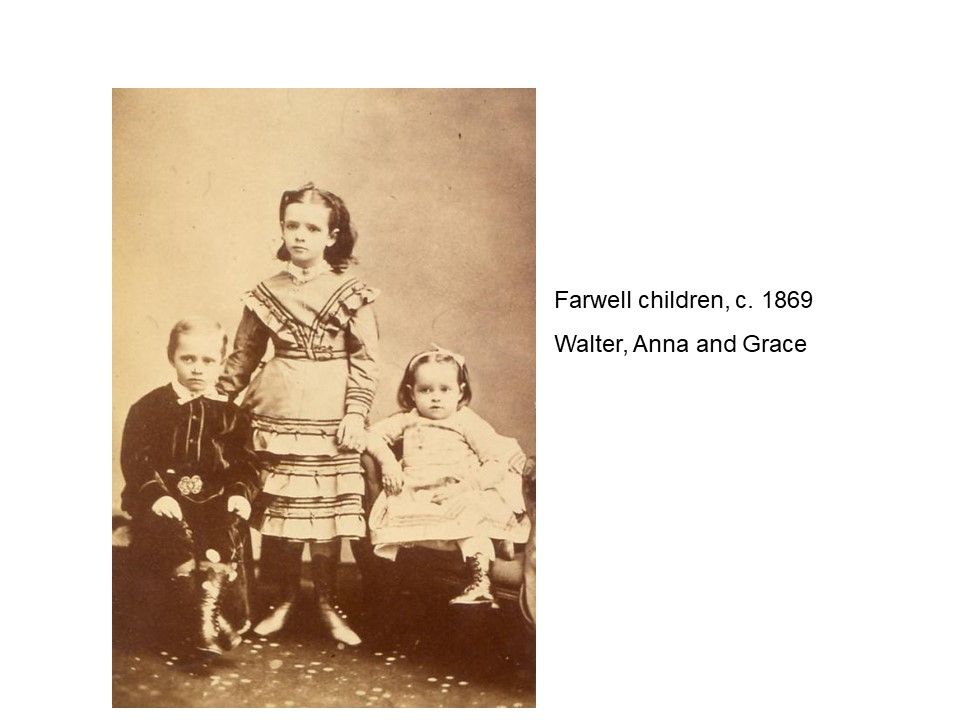
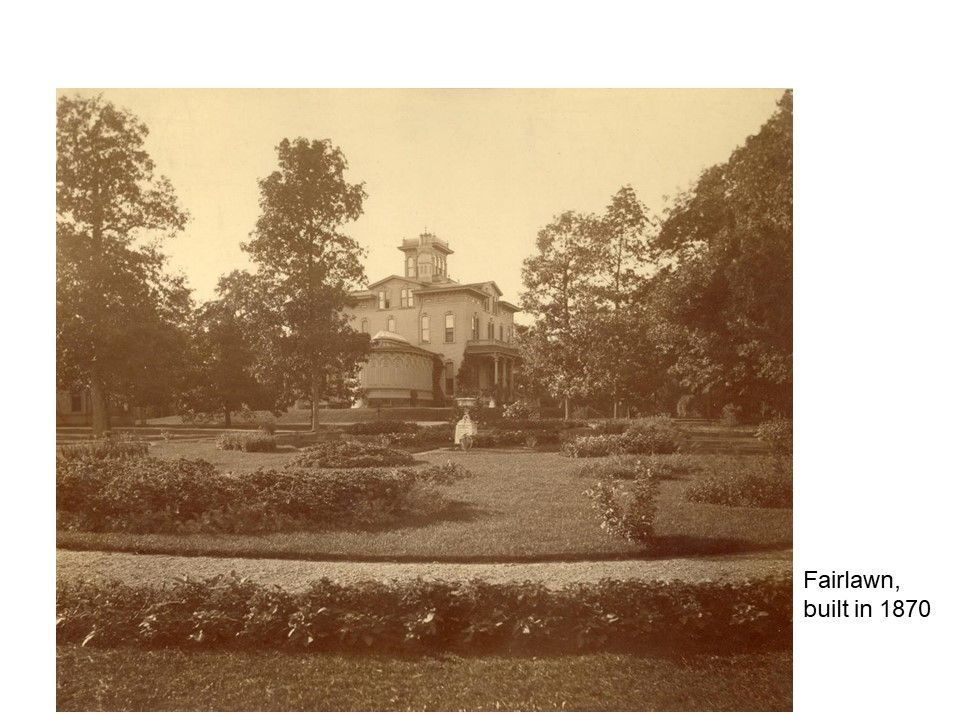
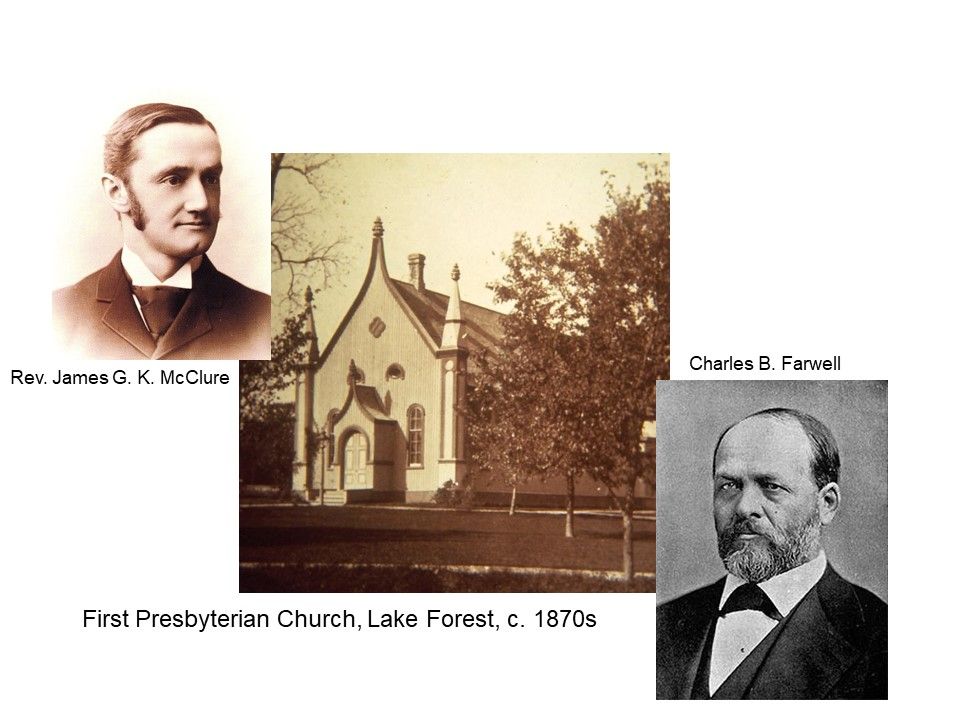
“One freezingly cold winter day, I looked out from my study window and saw approaching, the station master, Mr. William A. Morgan. He was holding his overcoat over something that he was carrying with great care. I went to the front door to meet him. As I opened it he said mysteriously, “Are you alone?” “Yes,” I replied. “Where is your private room?” “Here,” I replied, and into the study we went. He carefully shut the door. Then he drew out from under his coat a jug. It had a wax seal over the cork. He said: “Mr. Charles B. Farwell has asked me to bring you this jug. He wanted me to bring it so that nobody would see it and he said that he hoped you would have a good time drinking it – and nobody would ever know that you had it.” So he placed the jug on the study table – said that he must get back to the station and off he went. I was speechless. A jug of whiskey for me who had preached and urged total abstinence with all my soul! What did it mean? What was I to do about it? So I called my wife and I showed her the jug. Then I said, “Here I have been preaching total abstinence and Mr. Farwell evidently thinks I am a hypocrite!” My heart sank. It was as though my ministry was a failure. I looked at the lady and saw her confused and downcast face. She said, “It’s too bad. I didn’t think he distrusted you.” It was all distressing. I took up the jug – shook it and held it to my ear. As I shook it I heard what sounded like liquid. We looked at one another in sorrow. Our ministry was indeed in vain; we were not believed in. The she said, “I think that we better open the jug and see what’s in it, anyway.” It was a relief in the intensity of the moment to do something. So I broke the seal – removed the cork, and smelled! I was not very familiar with the smell of whiskey – but it did not smell as I supposed whiskey smelled. So I said: “It is funny smelling stuff.” Then the lady said, “Pour some of it out.” She handed me a glass. I poured from the jug – and it was maple syrup! Needless to say Mr. Farwell had his joke on me, and our friendship was cemented.”
Although Lake Forest at that time was a dry community, it was not a stretch for Reverend McClure to imagine Charles B. Farwell might have a jug of whiskey – as a politician, he represented wet as well as dry parts of Lake County and so remained more neutral on the temperance issue than many of his neighbors.
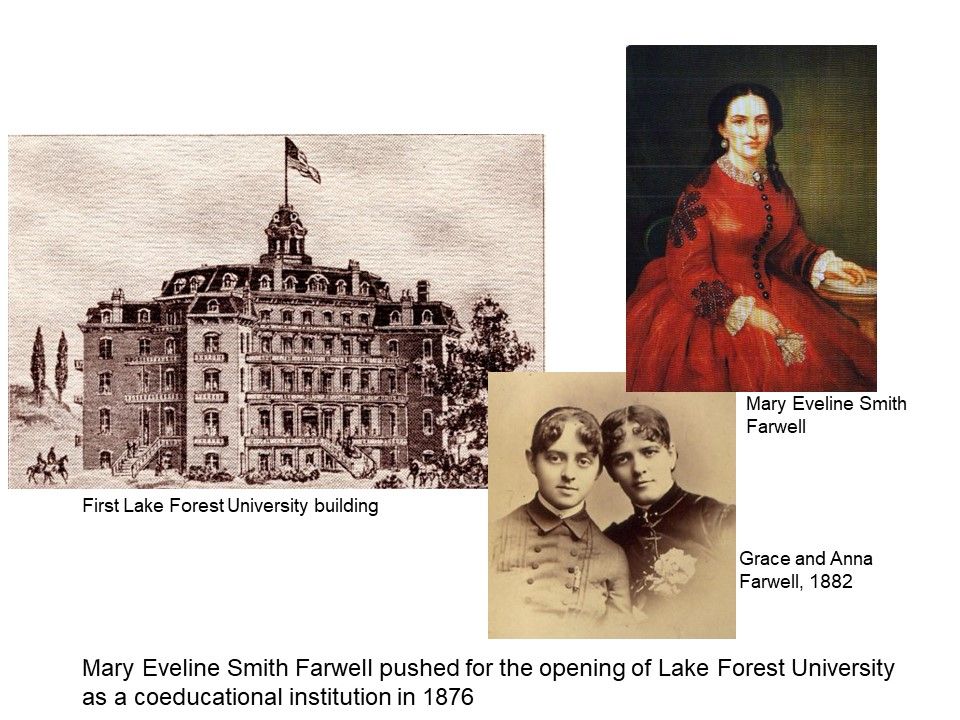
While Lake Forest Academy and Ferry Hall were going strong by the end of the 1860s, a combination of factors meant that the fledgling university in Lake Forest had never got off the ground. First, the young men of college age went off to fight in the Civil War. Second, the university’s main backer, Sylvester Lind, suffered a series of financial reversals and so could not sustain the enterprise.
As her daughter Grace Farwell recalled years later, “There had never been a college until my mother decided she would like to have one (a coeducational one at that) that my sister Anna could have a college education without leaving home. She then set forth, first to convince the people in Lake Forest that they wanted one, and then to procure scholars, for there were none.”
Mary Eveline Farwell grew up in Massachusetts, attending the Pittsfield Young Ladies Institute and then teaching school until her marriage. She was naturally very interested in her daughters receiving a quality education and, since it had been one of the purposes of Lake Forest from the beginning, hoped for them to have it close to home.
She had to take her sales pitch to the residents of Lake Forest, first. According to her daughter Grace, “Miss Annie Williams tells me that in asking her family for their support, she told them how nice it would be for the three young women in the family to have so many young men in town. Miss Williams said she mentioned that she thought they would be rather too young to be interesting, so my mother quickly said, ‘Oh, but think of the professors!’”
Mary Eveline Farwell then influenced the graduating class of the Chicago High School, where Anna Farwell attended, to come to the new Lake Forest University to continue their work. The Farwells offered all of the first 12 students scholarships to attend – except Anna, whose parents had to pay her tuition.
Then in the fall of 1876 the University formally took possession of the defunct Lake Forest Hotel building and turned the interior into classrooms and dormitory space.
When that building burned down in 1877, the Farwells gave a majority of the funds for the new College Hall. Anna Farwell was Lake Forest University’s first valedictorian when she graduated in 1880.

In 1871, Charles B. Farwell was elected to the U. S. House of Representatives. He served a total of five terms in the House, from 1871 to 1877 and again from 1881 to 1884. Then, from 1887 to 1891, he served in the U.S. Senate. Remember, at this time we did not yet have direct election of Senators. He was selected by the Illinois State Senate to fill the unexpired term in office of former Senator John A. Logan, who died in office.
As Senator, Charles B. Farwell was instrumental in establishing Fort Sheridan south of Lake Forest after the Haymarket Riots in Chicago. He also exerted his influence to ensure that Chicago was selected to host the 1893 World’s Fair.
By the 1890s, Senator Farwell was advancing in years and the newspapers were constantly publishing updates on his health. One article bore the headline, “C. B. Farwell Operated Upon,” with the rather foreboding subhead, “Two large stones removed from bladder without use of anesthetic.” Fortunately, he rallied from the operation.
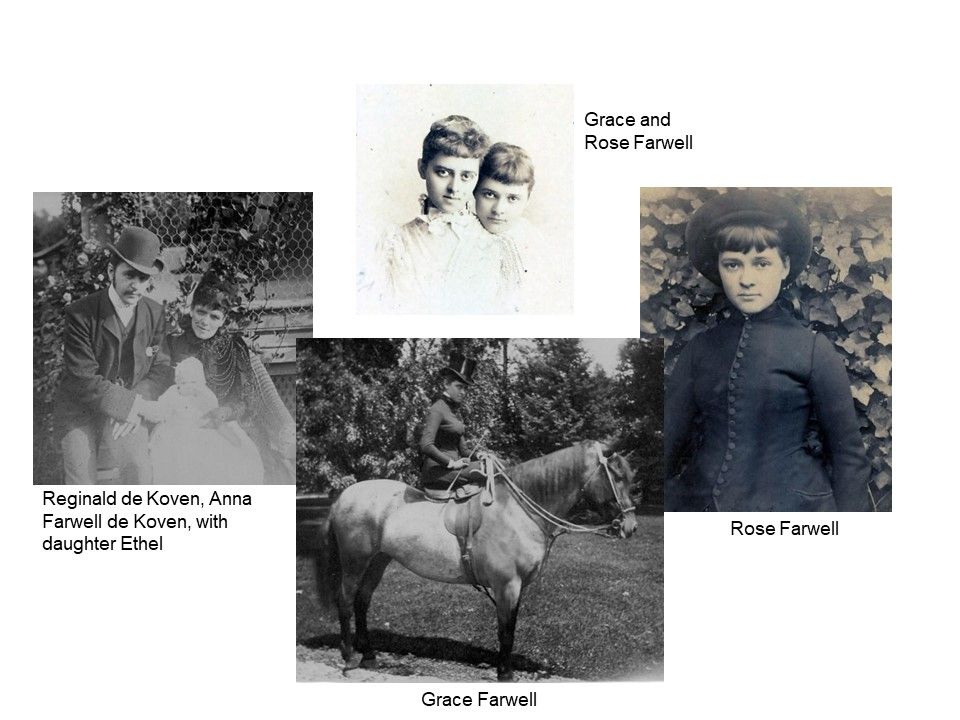
Anna was the writer – she authored articles, short stories, novels, even a biography of John Paul Jones. Her husband Reginald de Koven was a musician – they married in 1884.
Rose Farwell was an accomplished athlete – it was her talent and interest in golf that led the Farwells to have the very first golf course laid out on Fairlawn’s grounds in 1892 by Charles Blair MacDonald. She and her husband Hobart Chatfield Chatfield-Taylor helped found the Onwentsia Club in Lake Forest and also became social leaders in Chicago, gathering a salon of literary figures and artists around them.
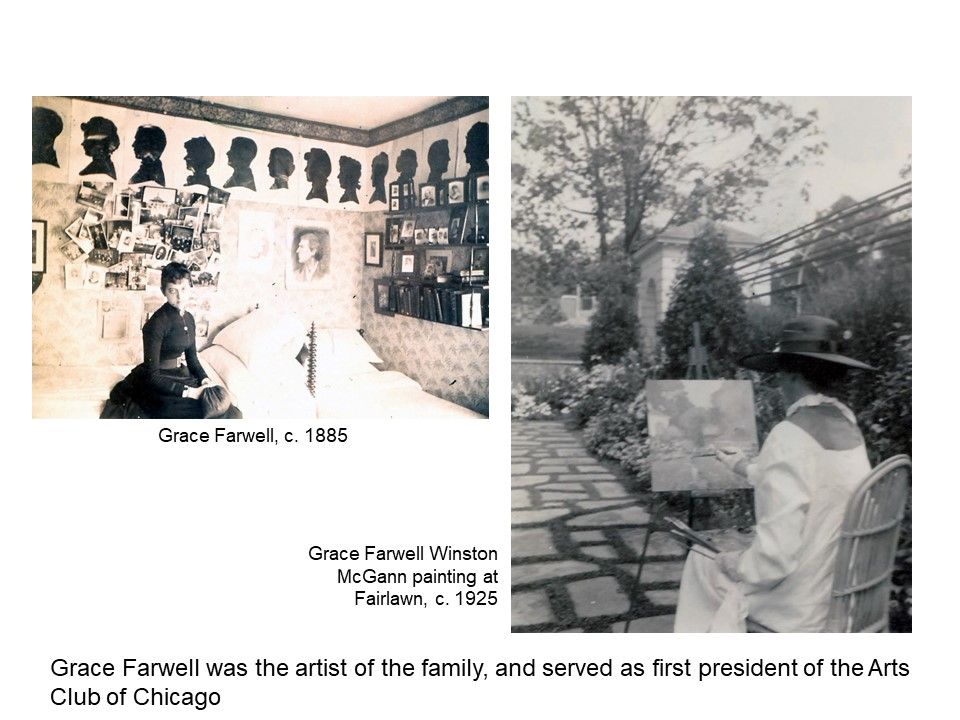
Grace also studied at the School of the Art Institute, focusing much of her attention on the art of portrait painting – several of her portraits were later exhibited at the Art Institute. In 1916, she became the first president of the Arts Club of Chicago.

Now we’ll introduce the family of Grace Farwell’s future husband, Dudley Winston. His father was Frederick Hampden Winston, a Harvard Law Graduate who arrived in Chicago in 1853 to begin a law practice that became Winston & Strawn, today Chicago’s oldest law firm. He focused on corporate law, organizing the Union Stock Yard and serving as general counsel to several of Chicago’s major railroad companies. He was a delegate to three Democratic National Conventions.


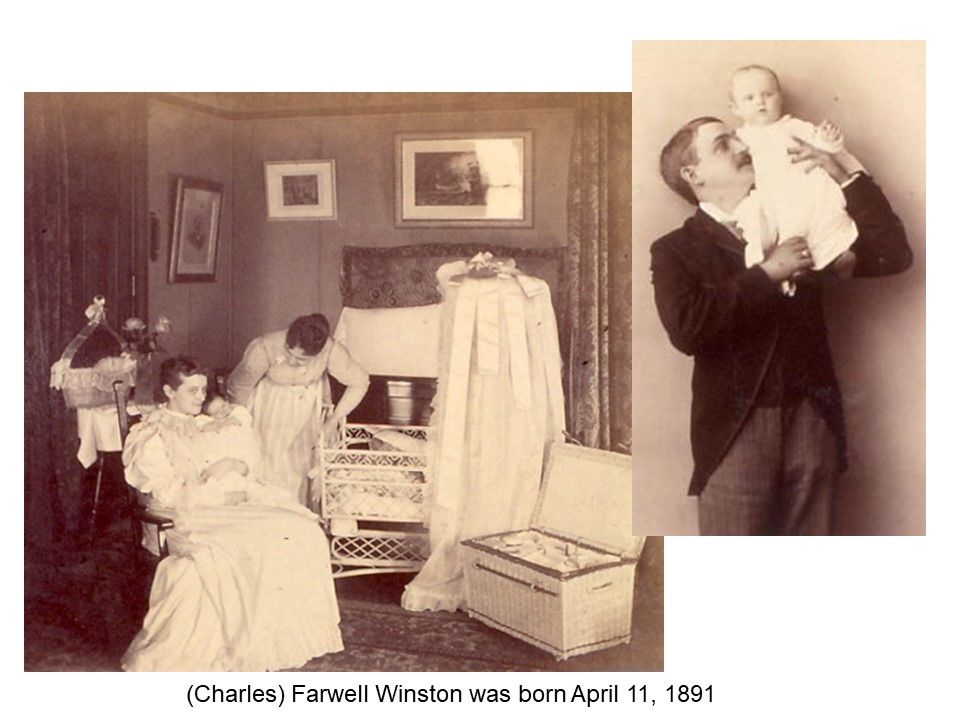
In 1891, Grace Farwell Winston gave birth to a son, named Charles Farwell Winston after his grandfather, but called Farwell. I love both of these photographs, but particularly the one on the left, with Grace in her bedroom with some nursery furniture added, holding a clearly very young infant while his nurse looks on.
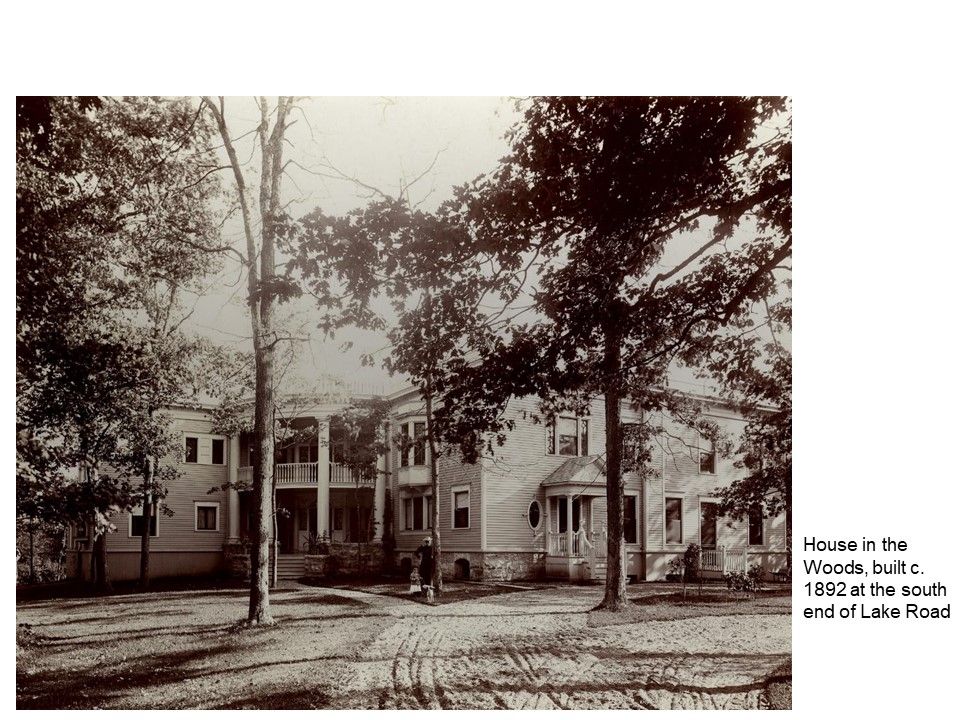

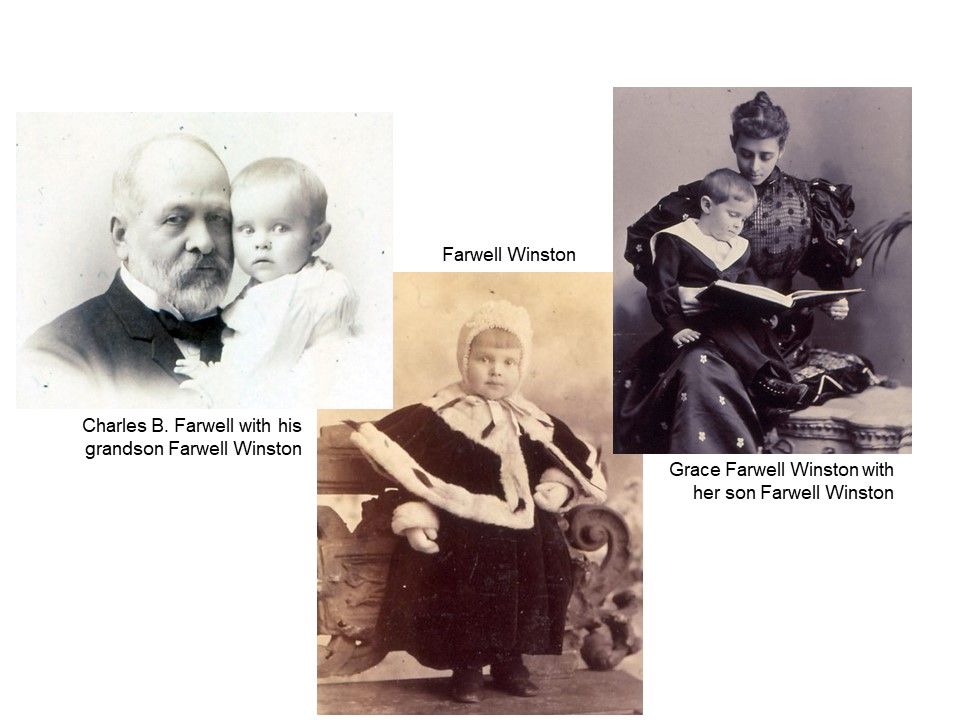
Farwell Winston was a much loved only child and the first grandson of Charles B. Farwell. (Anna and Rose both had daughters, Ethel and Adelaide, though Rose would later go on to have three sons). Farwell had rheumatic fever as a child, and occasionally had to be carried around on a pillow because his joints were so swollen. His parents traveled around a good deal for the benefit of his health, to various hot springs in south, and in Germany.
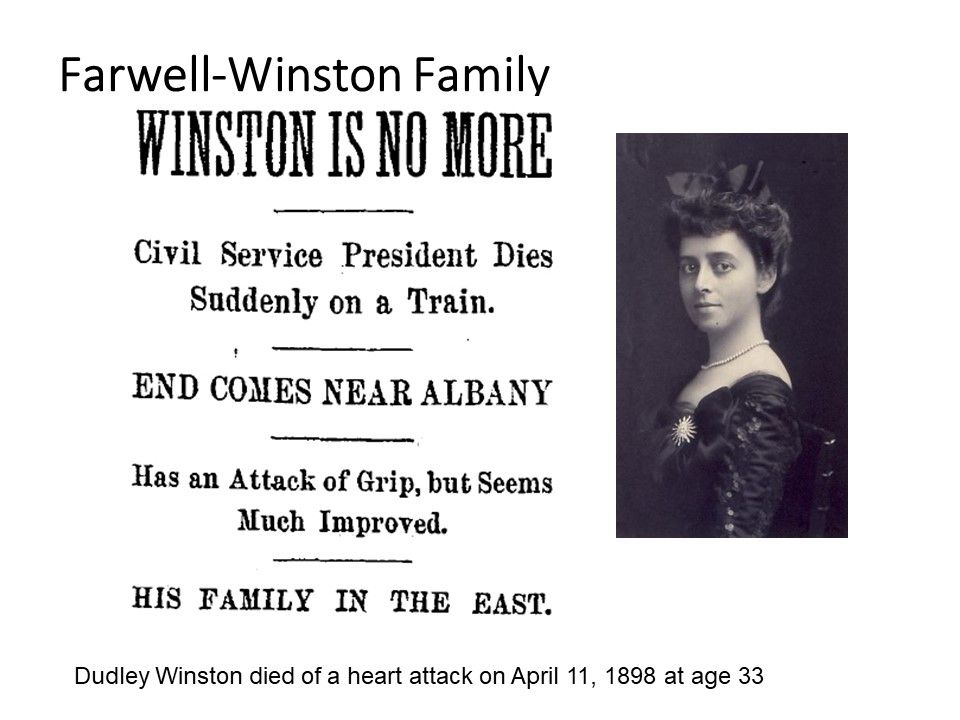
After his death, the Chicago City Council passed a resolution honoring Dudley Winston as “a man of sterling character, of unimpeachable honesty, full of zeal for the public good – a true friend, a faithful husband, and a loving son and father.”
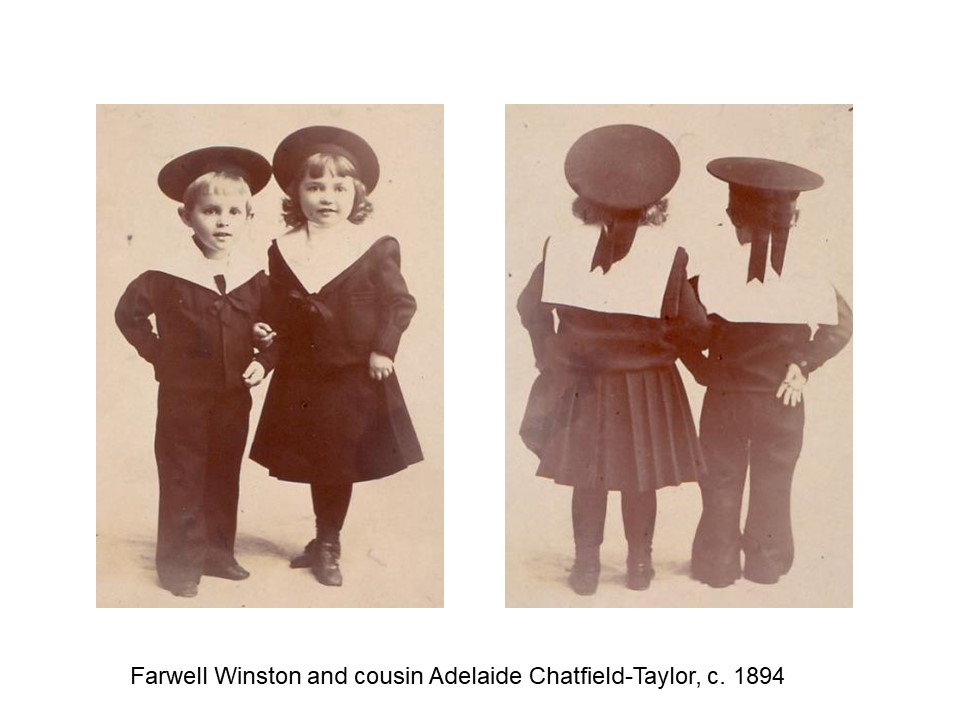


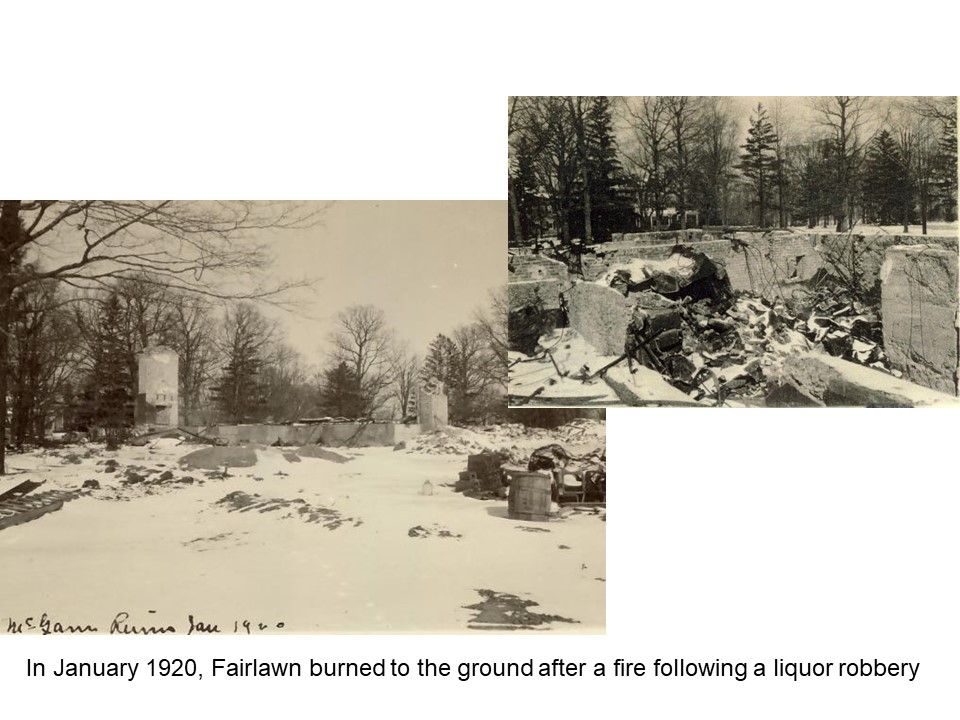
Shortly after Grace moved back to Fairlawn, the house suffered a horrific fire – you can see the devastation here. It was pretty much a total loss; fortunately no one was hurt. The fire occurred directly following a liquor robbery in the home – I should mentioned that this was January, 1920 – just as Prohibition was being ratified.
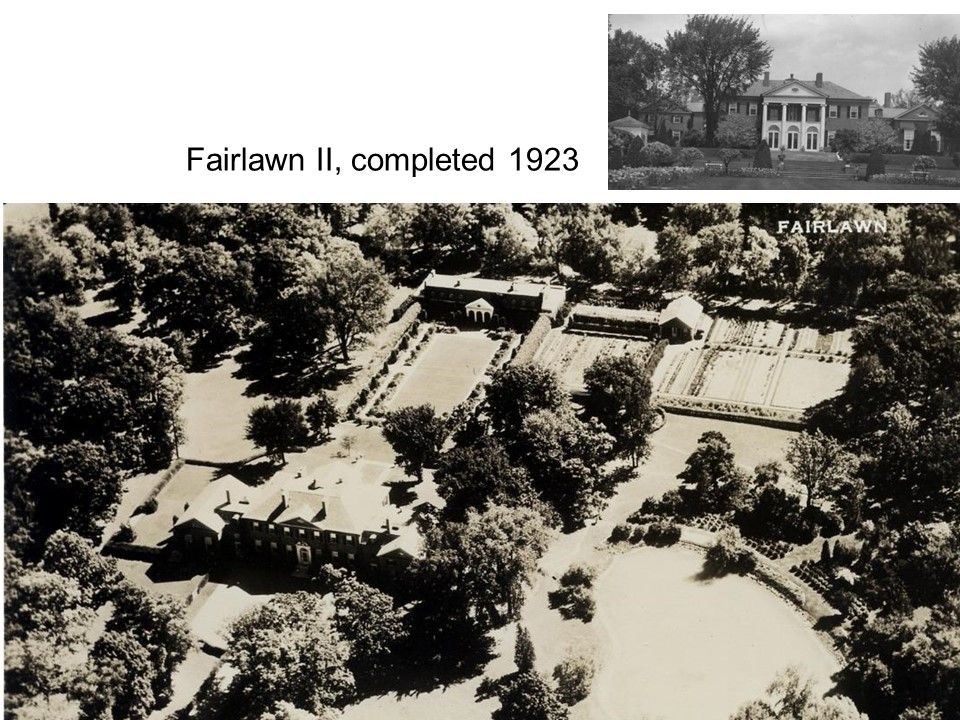
In the aerial photograph, you can see the house in the foreground, with the garage facing Spring Lane in the back. The pond is at right.
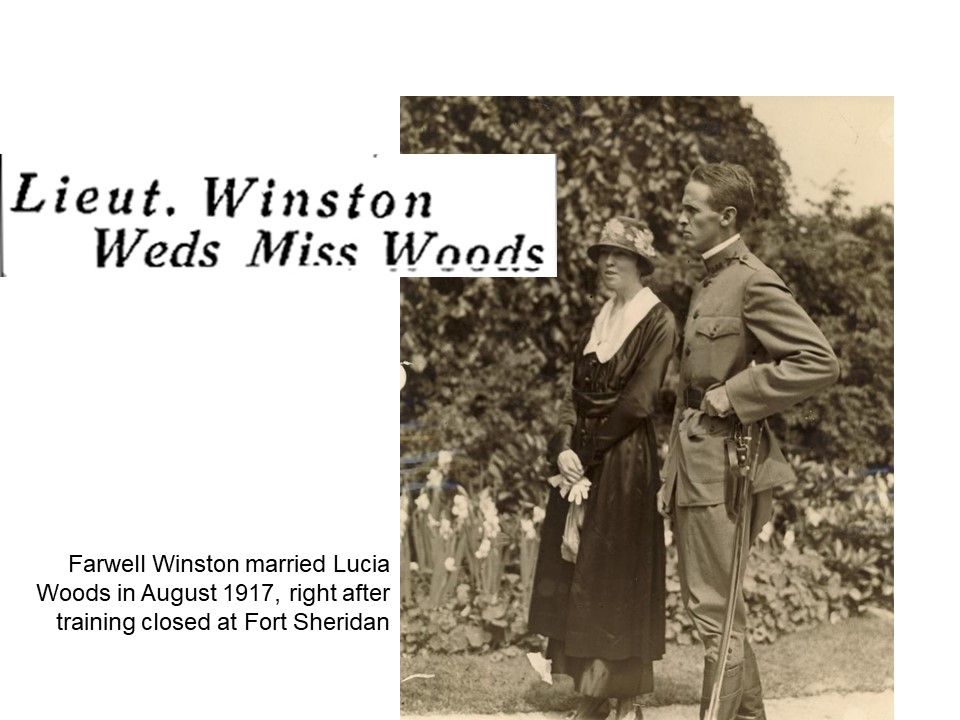
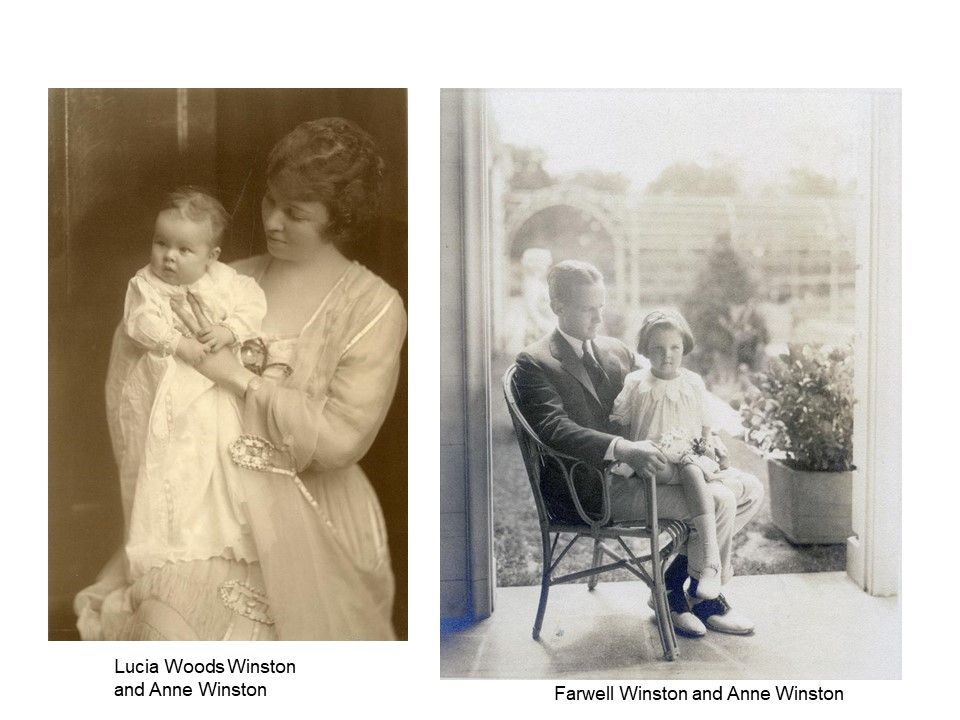

This photograph really captures the beauty of the pond at Fairlawn. Here you see Grace McGann on the bridge with Lucia Woods Winston; her husband Farwell Winston and daughter Anne are in the boat on the pond.
In 1927, Grace McGann married James H. Douglas Jr. He would go on to become a senior-level official in several presidential administrations: Assistant Secretary of the Treasury under Presidents Hoover and Roosevelt; and Secretary of the Air Force and Deputy Secretary of Defense under President Eisenhower.
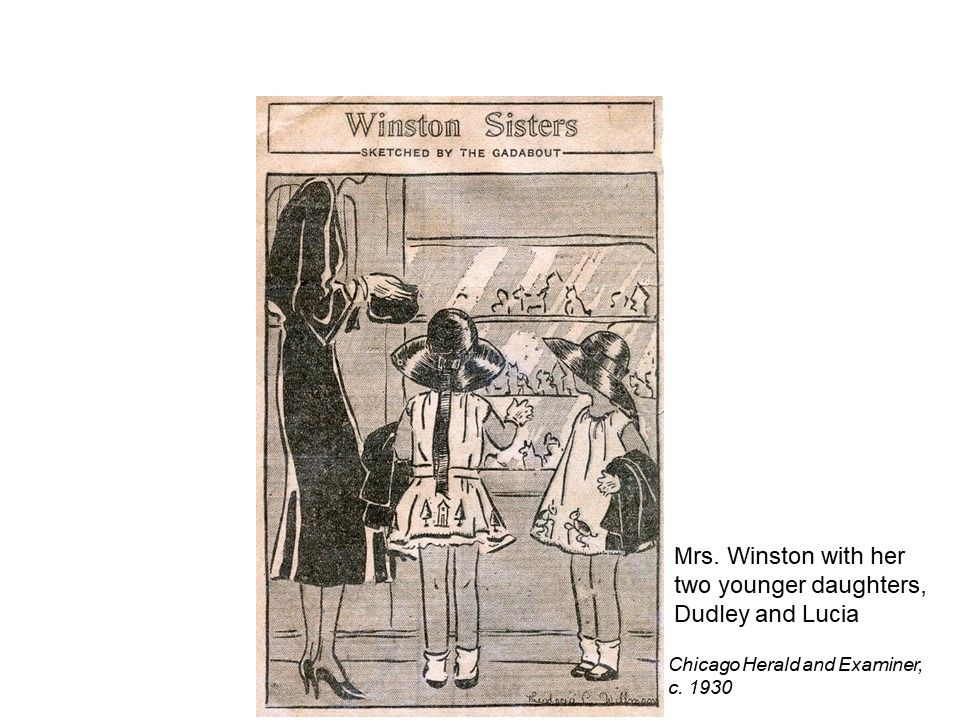
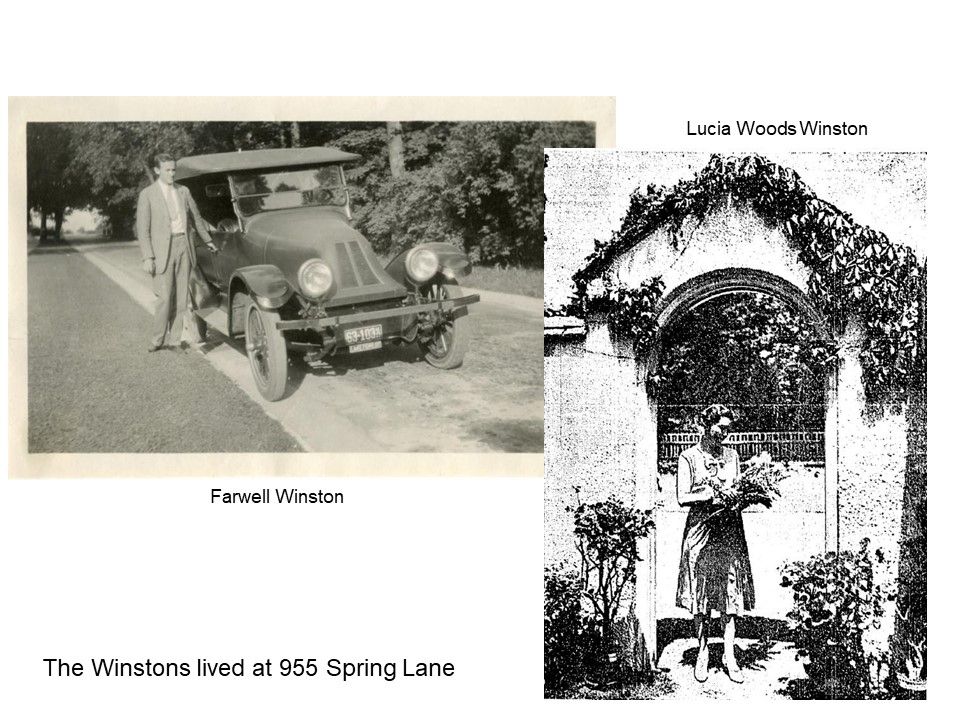
Her mother Lucia Woods Winston was a member of the Lake Forest Garden Club and was a very good flower arranger, which you can see from this Chicago Tribune photograph.
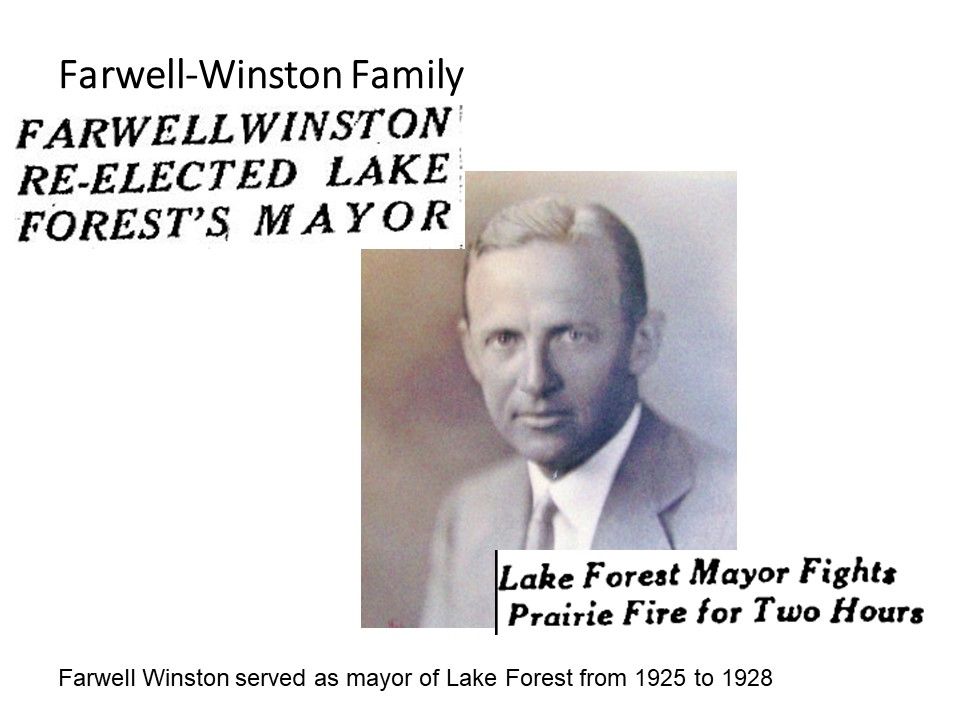
In 1928, Mayor Winston spotted an opportunity to serve the Lake Forest community even more directly. He noticed, while driving one Sunday past the Earle Reynolds estate on Green Bay Road, that a prairie fire was threatening the outbuildings, and rolled up his sleeves, seized a shovel and spent two hours on Sunday fighting the fire, aided by other residents in the vicinity.
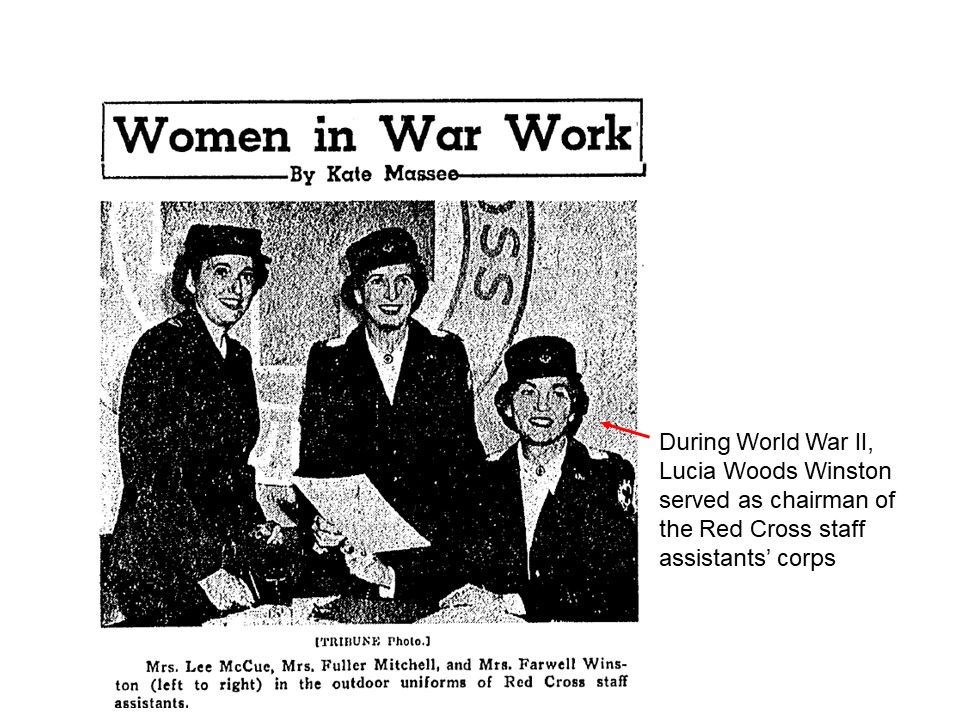
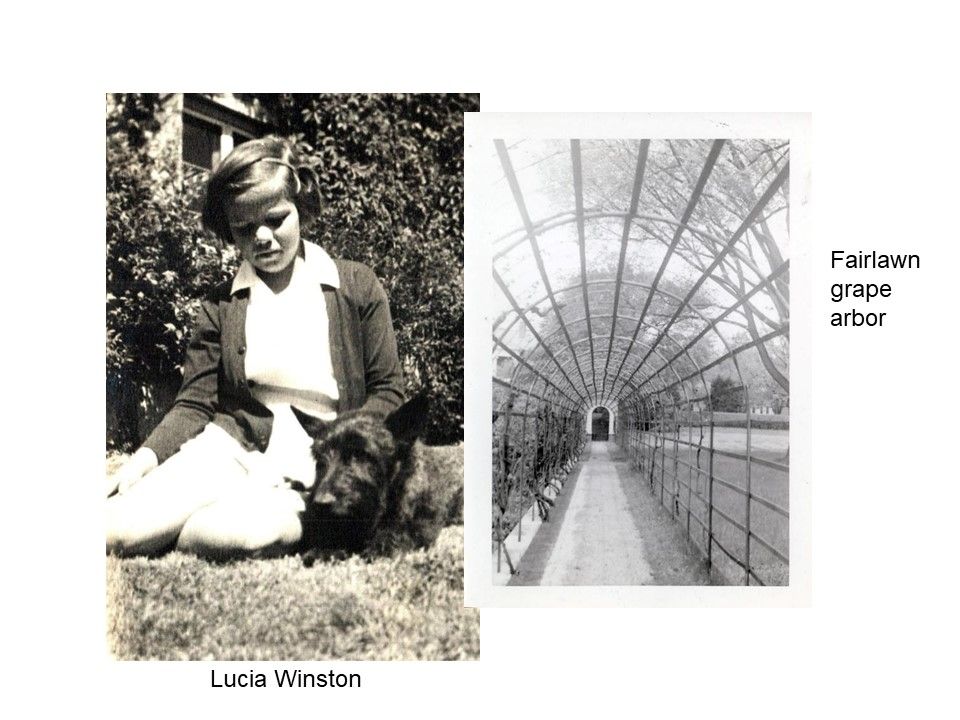
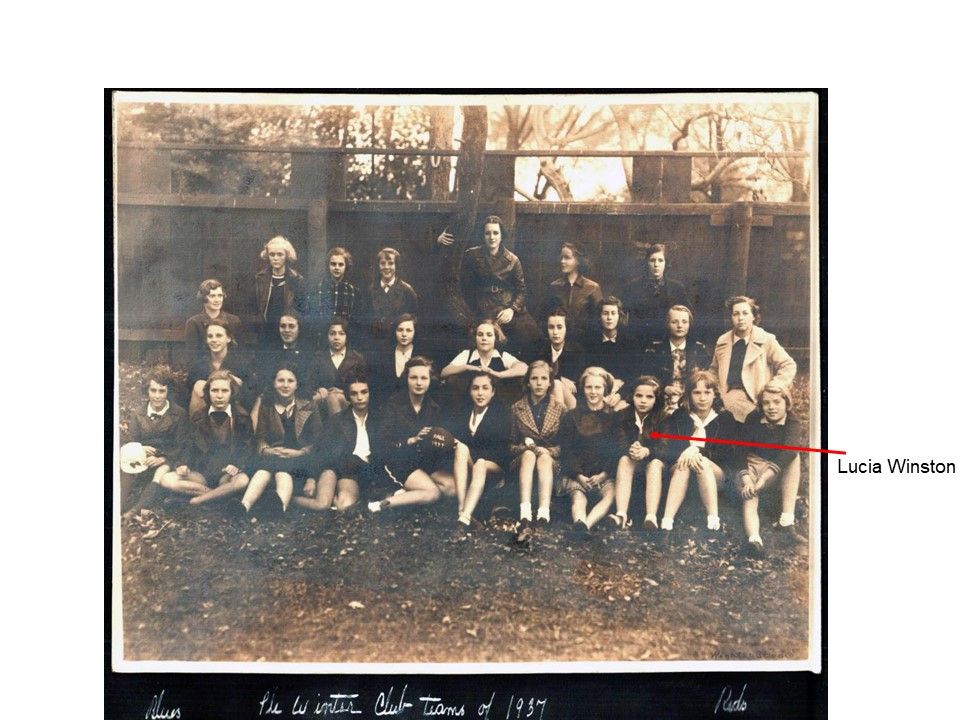
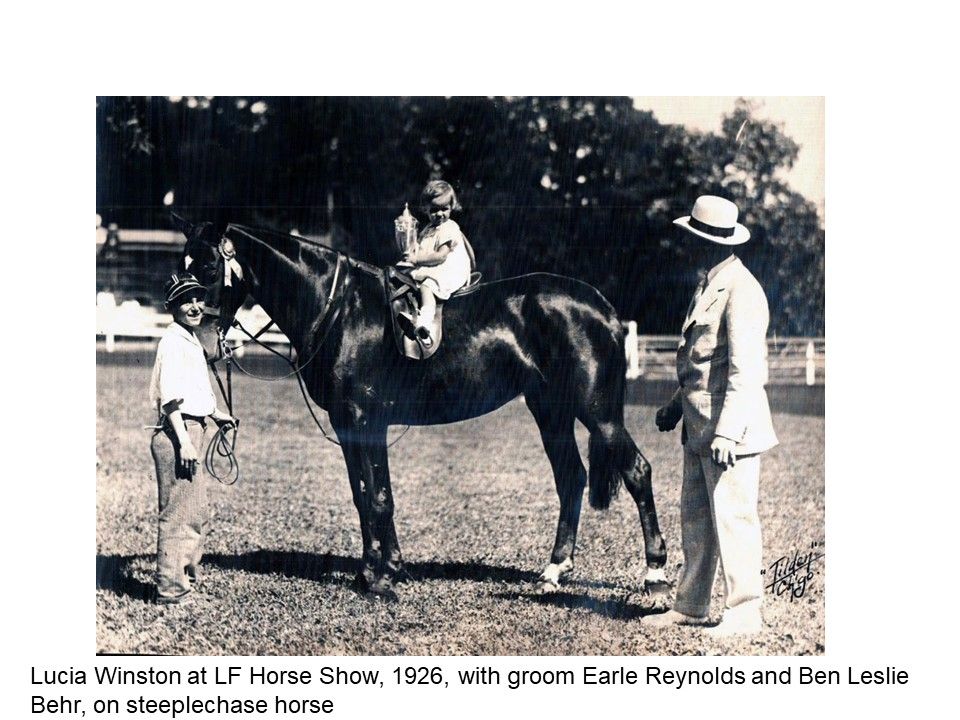
She would also head to the Onwentsia Stables on her bicycle, where she loved to go out riding. You can see from this photograph that she was encouraged in this pursuit – even crowned a champion – from a very early age!

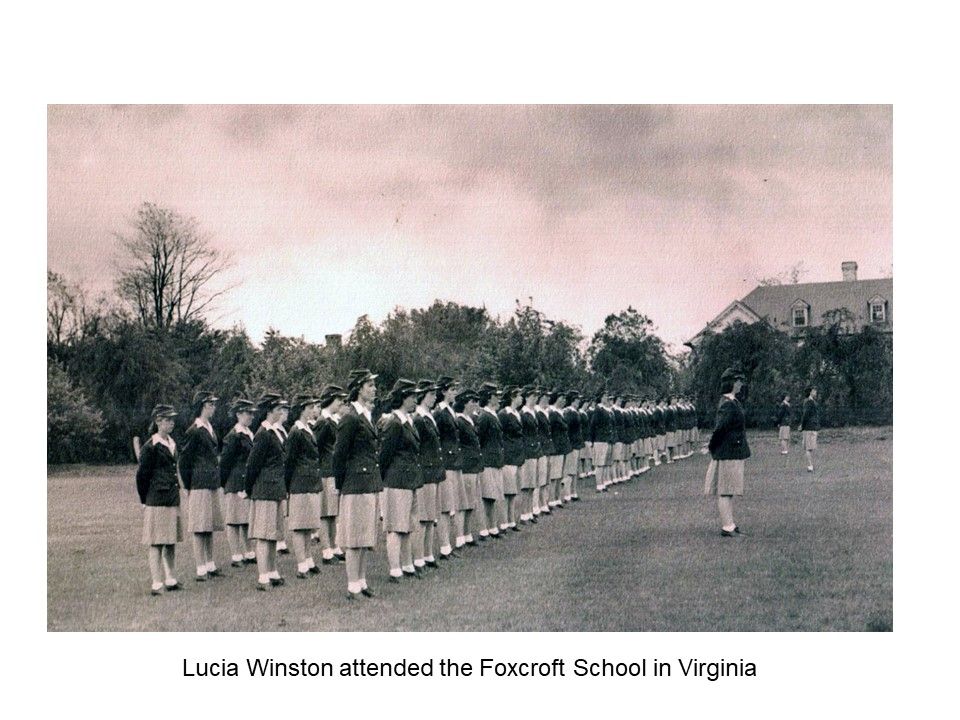
During the war, Lucia Winston came back to Chicago and served in the Red Cross, including as a nurse’s aide in the Cook County hospital. Her future husband, Vaughan C. Spalding, was at Yale – his class had to do their final exams orally, since they’d been called to go off to war.
Lucia Winston and Vaughan Spalding were married in 1947; their children were Vaughan III and Kathleen.
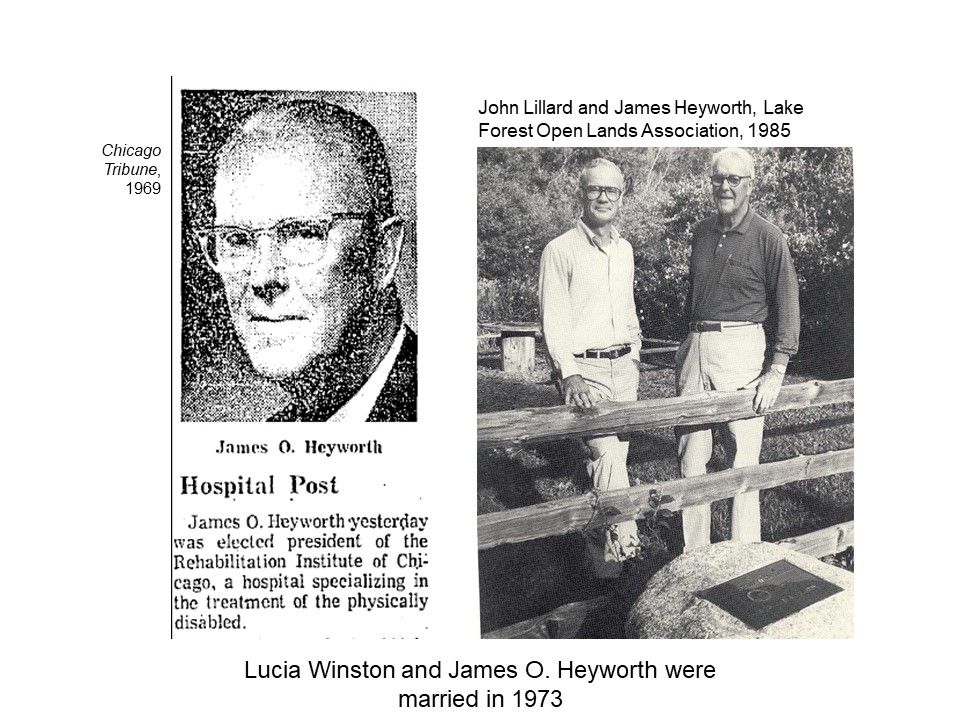
In 1973, Lucia married James O. Heyworth, who had three children from his first marriage, Martica, Mallory and James Jr. Jim Heyworth was, at that time, the president of the Rehabilitation Institute of Chicago. He had left a successful business career in 1968 to serve as the RIC’s first president, wanting to give something back to those in need, and over the next decade really built it to lead the field in rehab medicine.
In 1978, he served as President of the Lake Forest Open Lands Association; you can see him pictured here with John Lilliard in 1985. He expanded the Open Lands vision considerably by recognizing its potential to grow beyond its first preserve in the Skokie Valley.
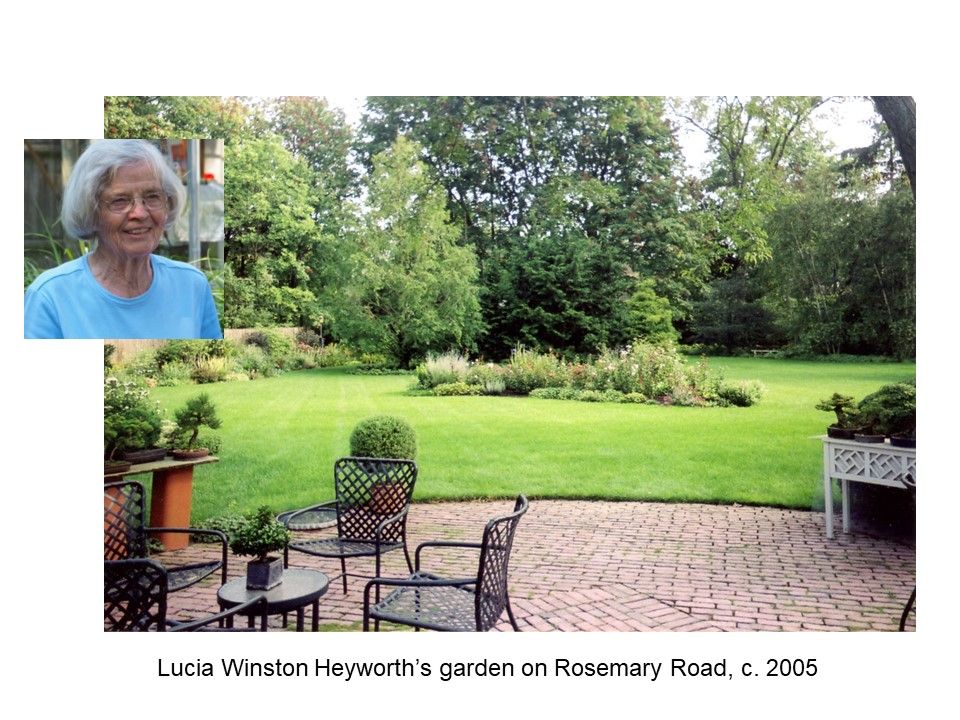

As we have seen, the Farwell family’s roots are nearly indistinguishable from those of Lake Forest itself. You can see a few images that represent their legacy here – a stained glass window at First Presbyterian Church, Farwell Field and the building that served as the college’s gymnasium, created after gifts from the family. Their greatest legacy, though, can be seen all around us as the town and college continue to thrive.